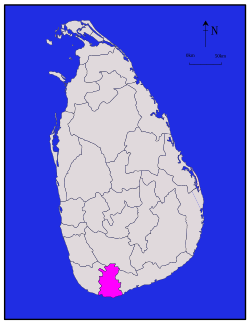
The Kirila Kelle wetlands are found a short distance inland from the southern Sri Lankan city of Matara. The wetlands are a part of the Nilwala River basin. [1] They comprise some 750 acres of wetlands. Canals were built by Portuguese Colonialists to mitigate flooding of the Nilwala river into Matara township and aid in the cropping of a further surrounding 6000 acres of rice and other farming. A failed attempt at flood mitigation in the early 1990s has meant that the once arable 6000 acres has now become un-farmable. [2] [3] This reduction in historically arable land has resulted in widespread poverty and associated social and environmental problems for some 35,000 people.
Contents

The Kirila Kelle Wetlands are the focus for a sustainable Environmental Conservation Community Development program. This is being developed through Ecotourism and community development, by way of a provincial integrated development strategy, that is managed and implemented by the community for the community.